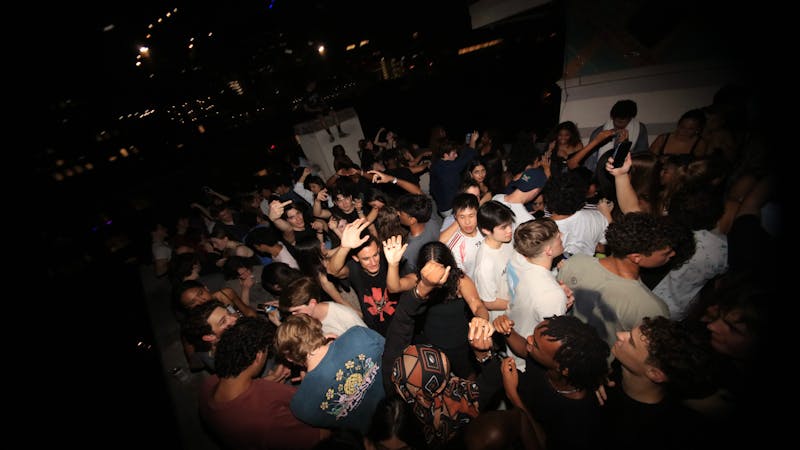Rice lab produces new light modulating device
The lab of Qianfan Xu recently produced a spatial light modulator that can manipulate and moderate light faster than current light-modulating technologies. Light modulation entails sending information by using light signals in optical cables, similar to how information is conveyed to a computer user through digital pixels.
Current light-modulating technologies, such as liquid crystal displays used in computer monitors or digital clocks, are slow in modulating light because they only have two dimensions to work with, Xu, assistant professor of electrical and computer engineering, said.
"The photonics field [the study of the use of light for information transmission] is developing very quickly, but the devices we currently use are very limited," Xu said.
The SLM device is made of a thin silicon layer with nanometer-sized grooves, according to Xu.
The device has many applications. It would help signal processing, a single-pixel camera being developed in another Rice lab and routing optical networks become more efficient, Xu said.
Jianbo Chen, a graduate student working in Xu's lab, said that this device can be used to display pixels since its light output can be modified to any wavelength. Chen said it can also be used as a sensor.
The lab's SLM modulates light through free space, so it works much faster and can switch light intensities much faster, according to Xu.
The device works based on a mechanism called diffractive coupling, Chen said.
"A simple way to understand this is to consider a wavelength of adjustable light incident at the device in the normal [perpendicular] direction, and in most situations it will transmit [through the device] because the media is transparent to those wavelengths," Chen said. "However, due to the property of the periodic structure of the device, also known as 'photonic crystal' structure, at some wavelength point or light energy, the device will prohibit the light from transmitting, and that gives us a method to control the 'on and off' status of light."
The device was developed not only because it manipulates light faster, but also because it is energy-efficient, Chen said.
Xu said the idea for the device was first developed two years ago, although the original idea only slightly resembles the current product.
"The first device we built was based on a ring resonator. It looked like a gear, so we called it a microgear resonator," Xu said.
Prototypes were built based on this original ideal but they turned out to be unsuccessful.
When the lab came up with the concepts behind the current device, instead of building the device itself, it sent the design to a silicon factory because it was too complicated to make in the lab, according to Xu. After a few months, the device was built, but with imperfections. The size was larger than ideal since the size the lab had requested was smaller than the factory could produce, but the device worked regardless.
Xu's device could potentially change how information is transmitted.
More from The Rice Thresher

Dis-O, move-in weekend see increase in alcohol transports from last year
Rice’s first wet weekend of the year saw four times as many calls for intoxication-related transports of students to the hospital compared to the previous three years, according to emails sent out by college presidents and chief justices.

On-campus meal plan changed to unlimited swipes
Housing and Dining recently revealed a new dining plan for the upcoming semester. The required on-campus meal plan now has unlimited meal swipes, compared to 375 meal swipes last year. H&D said the previous on-campus meal plan was for students who intended to eat on campus 15 to 25 meals a week.

Rice Stadium student section relocated
The Rice Stadium student section has been relocated to sections 106 and 107, according to an announcement from Rice Athletics on X.

Please note All comments are eligible for publication by The Rice Thresher.